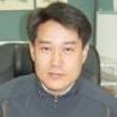Modeling and Design Based on Shape Memory Behavior
A special issue of Materials (ISSN 1996-1944). This special issue belongs to the section "Materials Simulation and Design".
Deadline for manuscript submissions: 20 September 2024 | Viewed by 1605
Special Issue Editors
Interests: shape memory alloys structures; smart materials; reinforced composites; manufacturing technology
Special Issues, Collections and Topics in MDPI journals
Interests: mechanics of polymers; sensors and actuators; 3D and 4D printings; computational mechanics; finite element analysis
Special Issue Information
Dear Colleagues,
Motivated by natural materials capable of adapting to their surrounding environment, many stimuli-responsive smart materials have been developed. Shape memory materials (SMMs) are a class of smart materials that, without any additional mechanical effort, are capable of memorizing their permanent shapes and recovering them through different types of stimuli. Among the four main types of shape memory material, which are shape memory ceramics, shape memory composites (SMCS), shape memory alloys (SMAs), and shape memory polymers (SMPs), the last two terms are of considerable attention due to the widespread types of applications. The feature of shape memory effect (SME) can be seen when a significant deformation may be recovered through a particular stimulus. However, other features including superelasticity (in alloys) and visco-elasticity (in polymers) have drawn attention due to the interesting behavior upon unloading and loading. Furthermore, several methods including experimental, computational, and applied mechanics may be employed to analyze mechanical as well as electrical devices.
Therefore, this Special Issue is focused on the analysis and development of novel devices, structures, and applications of SMAs and SMPs in engineering fields from civil and aerospace engineering to medical devices.
Dr. Eunsoo Choi
Dr. Hamid Shahsavari
Dr. Alireza Ostadrahimi
Guest Editors
Manuscript Submission Information
Manuscripts should be submitted online at www.mdpi.com by registering and logging in to this website. Once you are registered, click here to go to the submission form. Manuscripts can be submitted until the deadline. All submissions that pass pre-check are peer-reviewed. Accepted papers will be published continuously in the journal (as soon as accepted) and will be listed together on the special issue website. Research articles, review articles as well as short communications are invited. For planned papers, a title and short abstract (about 100 words) can be sent to the Editorial Office for announcement on this website.
Submitted manuscripts should not have been published previously, nor be under consideration for publication elsewhere (except conference proceedings papers). All manuscripts are thoroughly refereed through a single-blind peer-review process. A guide for authors and other relevant information for submission of manuscripts is available on the Instructions for Authors page. Materials is an international peer-reviewed open access semimonthly journal published by MDPI.
Please visit the Instructions for Authors page before submitting a manuscript. The Article Processing Charge (APC) for publication in this open access journal is 2600 CHF (Swiss Francs). Submitted papers should be well formatted and use good English. Authors may use MDPI's English editing service prior to publication or during author revisions.
Keywords
- actuators and sensors mechanisms
- modeling and simulations (analytical modeling, constitutive equations, finite element analysis, optimization tools)
- experimental investigations
- manufacturing process (3D/4D printing)








